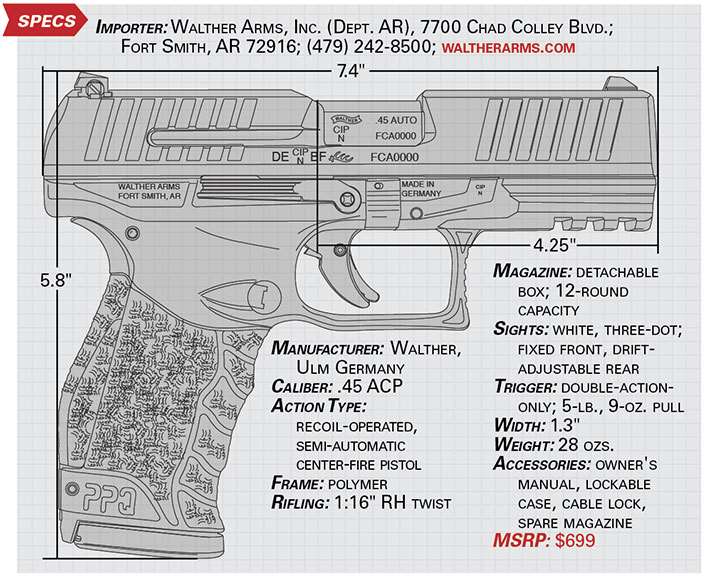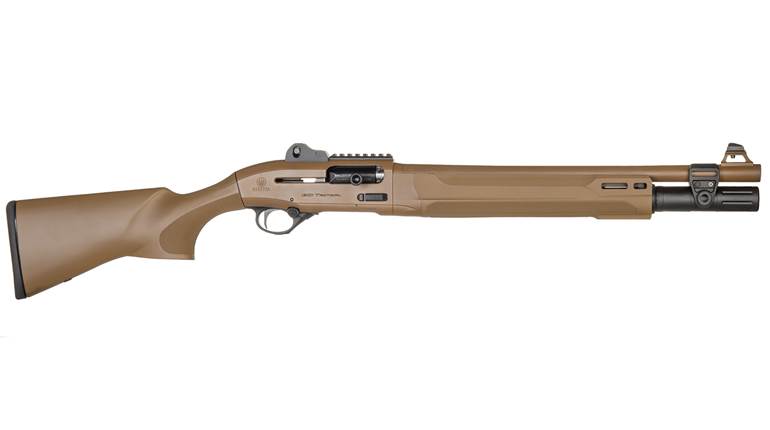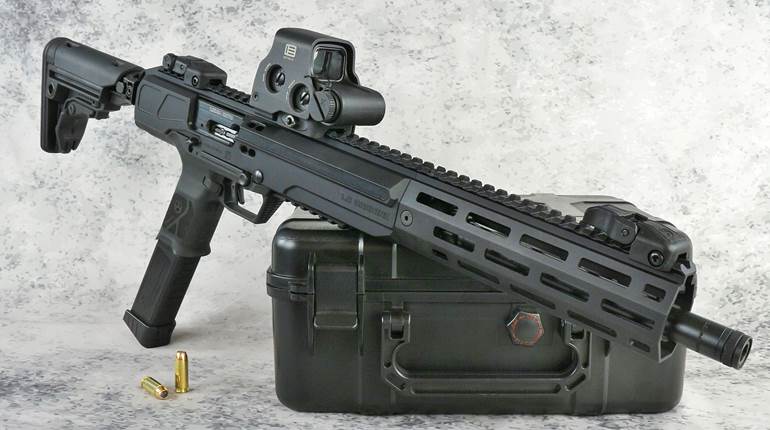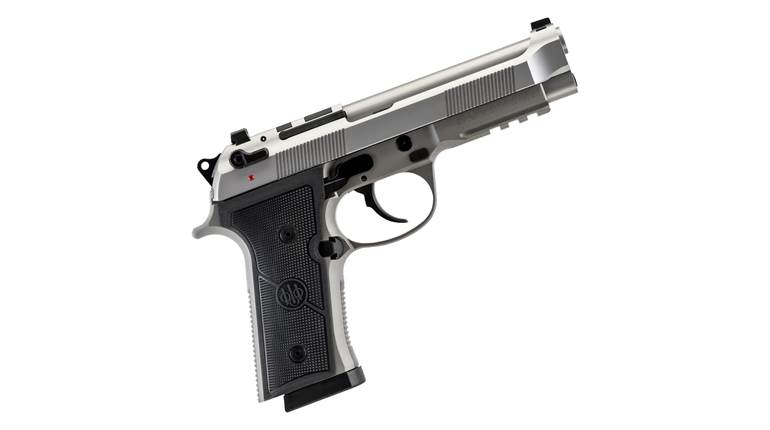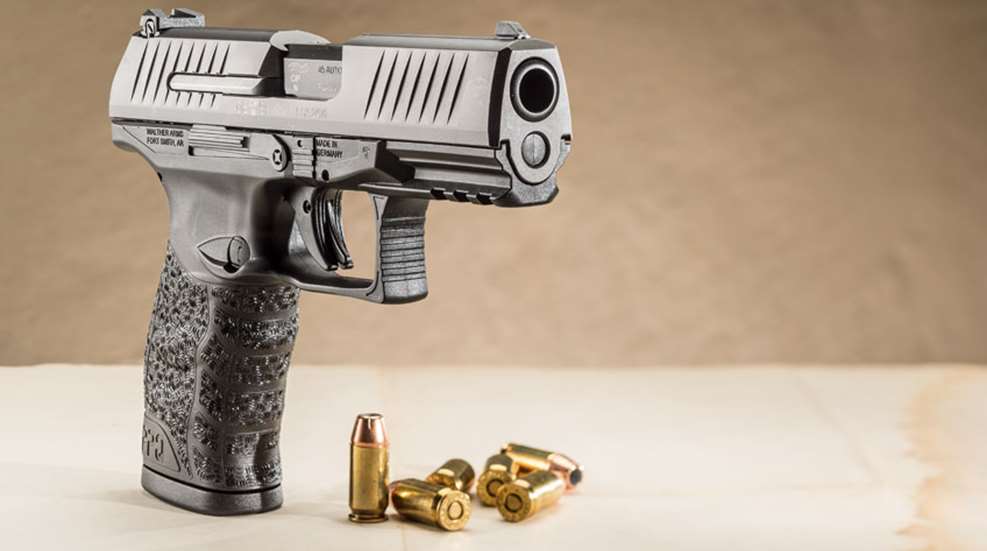
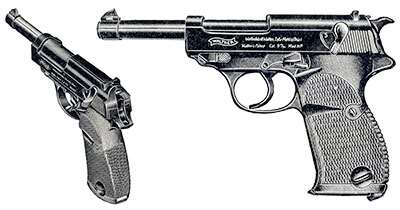
It’s right there in black and white: “[I]t has been experimentally made and found to be 100% satisfactory for use with the Super .38 and .45 automatic cartridges and pistols in these calibers will be available about the middle of the year.” Thus read descriptive copy on p. 146 of the nation’s largest gun catalog. The comment related the virtues of the new P.38 pistol from Walther and appeared in the venerable Shooter’s Bible in 1939. That pre-World War II catalog was the 31st in a series that continues today, although its status as a true catalog has changed a bit. A publication of the A.F. Stoeger Co. of New York, this thick volume was initially both catalog and reference book. It filled a huge space in Depression-era America that had only the magazine you now hold as a source of definitive firearm and ammunition data. Stoeger was an important importer of European arms, including the products of Germany’s Walther. In its day, the P.38 was a milestone pistol, so a .45 ACP or .38 Super version might have sold well in America.
But it never happened. There is no surviving sample of any version of the P.38 in either chambering. The main history of the company mentions some pre-war interest in such a gun and the possibility of prototypes, but if they ever existed, they didn’t survive the war. Also, that same history shows a pistol named the Big Bore. Designed in the mid-1990s concurrently with the Walther P99, the Big Bore was similar in appearance to the M1911 in .45 ACP. But Walther didn’t offer its version of the Government Model commercially. Ergo, no Walther .45s. But Americans love their .45s, despite the rising popularity of 9 mm Luger pistols. For a company that seeks a decent chunk of the American pistol market to not have a .45 ACP option is risky. Thus—for the very first time—American Rifleman offers a review of a new Walther pistol marked with the company’s banner logo and, yes, it is a .45.
The new pistol is a version of the PPQ model, suitably altered to accept the larger cartridge. To understand the PPQ 45, we have to take a brief look at the recent history of service pistols in general and Walthers in particular. Most of the interest in modern semi-automatics for police, military and civilian use began in the 1950s and ’60s, and a particular style of gun began to appear. It was nearly always a 9 mm Luger with high-capacity magazine and double-action/single-action (DA/SA) trigger system. By the end of the ’70s, most police agencies were armed with just this sort of handgun. In the ’80s, a different style of gun emerged, typically with the same type of 9 mm magazine, but using various kinds of internal mechanisms, often with simplified trigger systems. In the ’90s, we began to see new chamberings to match up with service pistol magazines and double-action-only (DAO) triggers. Walther came in a little late, but in time for the U.S. pistol trials with its P88 series. That evolved into the P99, which featured an unconventional and highly complicated DA/SA trigger system. Our subject pistol—the PPQ 45—is a direct descendant of the P99, with a strong resemblance in ergonomics, finish and general appearance, but with a much simpler DAO trigger system. The striker-fired PPQ was first introduced as a 9 mm Luger and then as a .40 S&W.

In either chambering, the PPQ was a very appealing package, with full-size pistols weighing around 30 ozs. and dimensions in line with most of the contemporary models. In 9 mm Luger, the PPQ had a 15-round capacity, which dropped to 11 when the gun was chambered for the larger .40 S&W cartridge. Now that the even larger .45 ACP round fits a PPQ, we have an even bigger pistol.
Walther’s PPQ in .45 ACP is a large automatic pistol. It would fit into a box measuring 7.4" by 5.8". Thickness across the twin slide locks measures 1.3". It is a recoil-operated gun, operating on the basis of the time-proven tilting barrel principle pioneered by John Browning. Weighing 28 ozs. with an empty magazine, the PPQ 45 takes a double-column magazine of 12 rounds. Among modern pistols chambered for this venerable cartridge, this is one of the higher capacities. Like most of its contemporaries, the big PPQ has a polymer receiver, topped with a steel upper and barrel unit.
The sights on the top of the slide are the familiar three-dot type. In an unusual touch, the rear sight is adjustable for windage by means of a screw on the right side. Elevation adjustments require substitution of different front side blades—a higher one will lower the point of impact, etc. There is a slightly elevated serrated rib running between the sights. The flats on the sides of the slide are a bit different than many competing models. Instead of being parallel and dead flat, they are slightly rounded and angled inward. It gives the gun a sort of pagoda look. Also note that there are large cocking serrations on both sides and ends of the slide. There’s a lot for the shooter to grab when he runs the slide on this one. Machined from high-quality steel, the slide also has an interesting external extractor—a massive one—at the lower rear corner of the ejection port. The spring-loaded striker is contained within the slide, as is the barrel and recoil spring, captive on the guide rod. Finally, Walther designers beveled and relieved the ejection port.
The receiver, molded from a high-strength polymer material with steel inserts, has some great ergonomic features. Pistols can tend to skid around in the shooter’s grasp, particularly when hard-recoiling ammunition is in use. To counter this, the PPQ’s molded polymer frame has surface texturing comprised of raised dots and crescent-shaped lines. They are quite small and are placed in patterns that are cross-directional. The resulting surface is not particularly aggressive, but nonetheless seems to anchor the gun in the hand very well, even under heavy recoil. There are very slight finger grooves on the frontstrap, which carry over to the sides of the grip. To the rear, the backstrap has a slight “S” curve with a deep pocket that takes the web of the shooter’s hand. In an attempt to tailor the grip to all different-size hands, Walther designers worked a replaceable backstrap feature into the PPQ. There are three different sizes available. And while the trigger guard’s hooked shape is inexplicably dated, the high-hold relief under it is excellent. Another useful feature is the three-slot accessory rail under the front edge of the frame that can mount a light, laser or combination thereof.
Inside the molded frame is a metal, rack-like assembly, held in place by a pair of sturdy pins, that constitutes the serialized receiver. Along with the necessary levers and related parts that make up the gun’s lockwork, it fits into recesses in the polymer frame, with the serial number visible through a window in the frame’s tang.
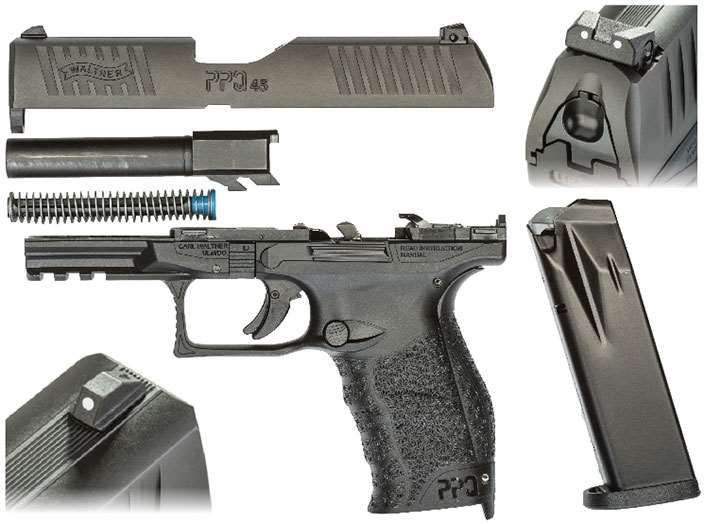
Running the PPQ 45 is pure fun for a .45 guy. With an empty gun (slide locked back), the shooter inserts a fully loaded magazine, then grasps the slide with an overhand grasp, pulls all the way back and releases. The slide will close, chambering the top round. There are matching bilateral slide locks on the pistol, and they are there to lock the slide back. If you run the gun to empty, they will automatically do just that. Note that the new Walther does not have any kind of manual thumb safety for the shooter to manipulate prior to firing.
While the process of firing the gun is straightforward—simply draw, aim and press the trigger—it requires a bit of discussion relative to one of its salient features, which is its short trigger reset position. After the first shot, the shooter must first release the trigger at least to the reset before pressing it again to fire a subsequent shot. And while almost all shooters let their trigger go all the way forward, that simply isn't necessary on this pistol. The Walther DAO trigger action, which completes the twin functions of cocking the striker and releasing it, allows the shooter to pull the trigger all the way back (firing a round) and then let it go back only a fraction of an inch before it resets. If he chooses to let the trigger go all the way forward, the internal safeties will kick in and he will have to sweep the trigger completely through its long arc in order to fire again. The advantage of the former method is simply faster shooting. With practice, someone "shooting to reset" can get two aimed shots out of the Walther in less than a second.
When I was growing up as a pistol competitor and carrying a pistol in combat, I never heard any discussion of such a procedure. That’s mainly because our games did not require blinding speed. In modern times, we are much more concerned with combat shooting in the Modern Technique. Many pistol manufacturers are now emphasizing short trigger resets in their marketing efforts. With its PPQ line, regardless of chambering, Walther is one such maker. I have fired many of these models, as well as many of their competitors. The reset is so short—and so light—that it may be the quickest of them all.
Obviously, this is an important feature. There are a number of other features that commend the newest PPQ. Ergonomics, the physical relationship between the gun and the gunner are excellent. The butt section fits the hand well, placing the shooter’s mitt in position to perform the up-and-back trigger sweep that delivers the first shot. Another important factor in semi-automatic pistol performance is recoil recovery. This brings us back to that all-important aspect of ergonomics again. The Walther, properly handled, stays put in your hand when fired and doesn’t lift a straightened arm off target. That’s particularly true when fired in a proper two-handed grip.
At the range, I did a fair amount of informal shooting to get a feel for the pistol. This included shooting at those orange polymer gizmos, dirt clods, etc. I also tried to induce malfunctions by limp wristing the gun and shooting upside down and even sideways. It never balked. For accuracy, it was a solid bench and sandbags. Accuracy was excellent, probably just a little more than 2" on the average for five consecutive, five-shot groups at 25 yds. Shooting an old favorite load from Jeff Hoffman’s Black Hills Ammunition, I got one group of about 1¼". The gun will shoot.
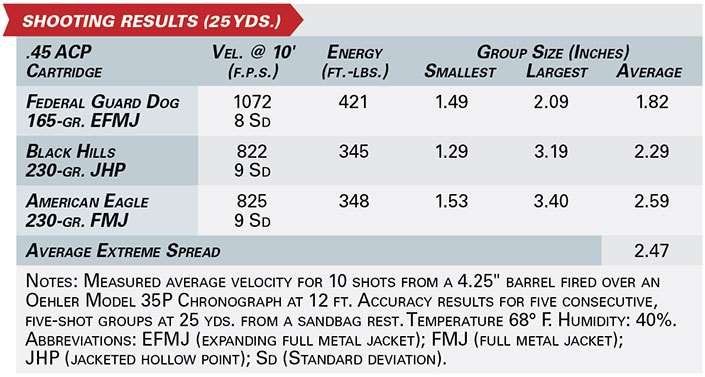
The future of this nice new gun is dependent on two things. One is field performance. How well will the gun hold up to thousands of rounds down range under rough field conditions? You never know about that until a bunch of cops really beat the heck out of their guns. Second is the number of these things put in the hands of shooters of every stripe, which tends to develop a reputation. The guns are well named (PPQ stands for Police Pistol, Quick), and I think they’ll do well. And Walther has finally delivered the .45 it promised us more than three-quarters of a century ago.
